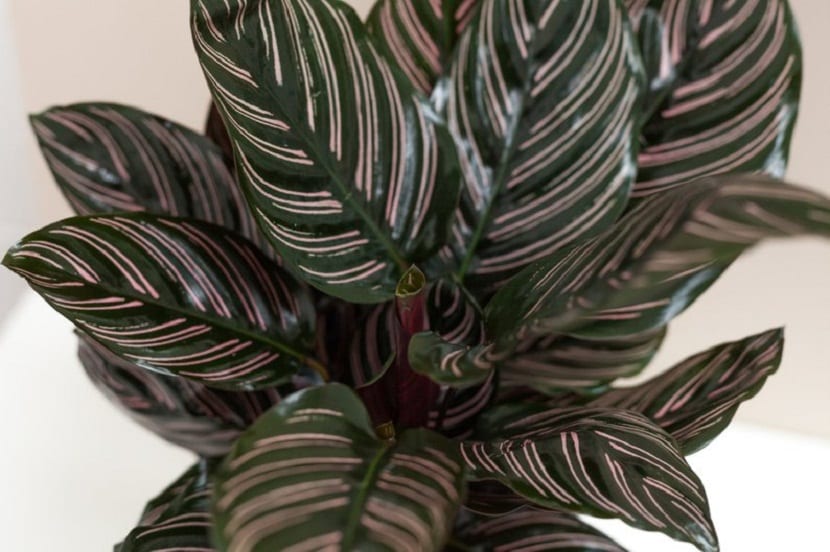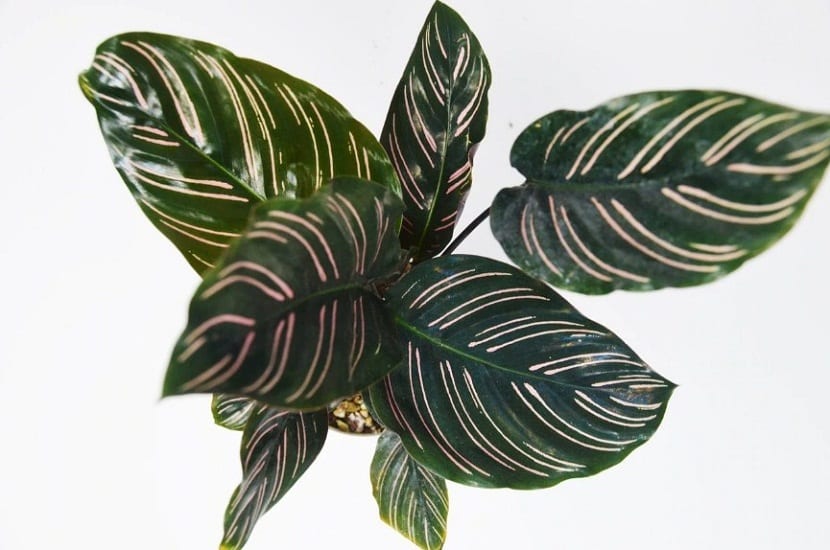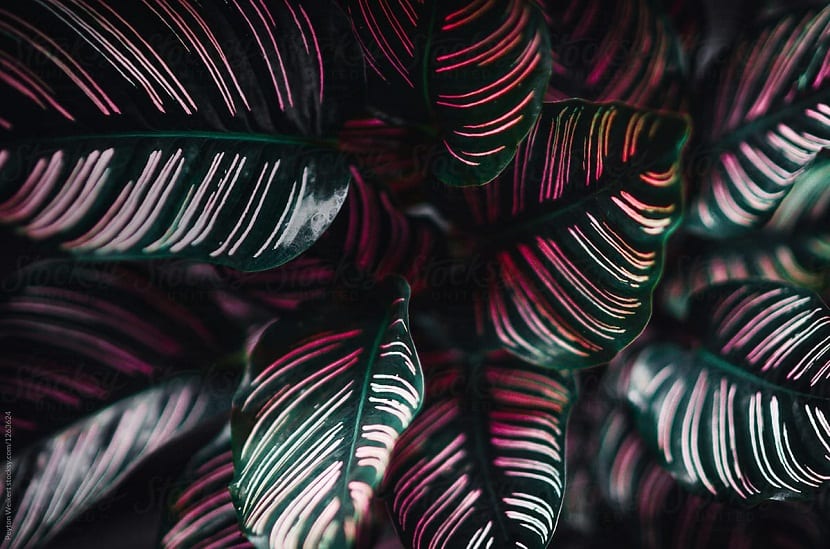
La Calathea ornata It has beautiful foliage with oval and lanceolate leaves of green color combined with purple. The younger leaves have white and pink lines that characterize this particular species. These plants give the interior of the home a pleasant tropical atmosphere that combines perfectly with warm or exotic environments.
The plants of the genus Calathea are from tropical climates so they are usually very showy and from an ornamental point of view they offer a sight worthy of admiration. Its leaves resemble a peacock and according to the species it varies in shape, color and size. They are usually collected at night and in the morning it spreads like a flower.
Origin and characteristics of Calathea ornata

The Calatea are plants of the Marantáceae family that are made up of an extensive number of more than 100 species native to the tropical areas of America, Africa and Australia. The plants of American origin come mostly from the jungles of the Brazilian Amazon. And this breeds most frequently in tropical Colombia.
Features
What is striking about Calathea as a tropical plant is its beautiful foliage with large, highly ornamental leaves. The shape of the blade is oval and elongated. It has some very showy white or pink lateral veins, especially when the leaf is young. The rest of the foliage has a varied hue of green with purple.
The only species of the Calatheas with showy flowers is the crocata. The ornata like the others has very discreet flowers barely visible white or yellow and cylindrical in shape. In its tropical habitat it can be up to two meters, but in the more temperate zones it has to be an indoor plant that hardly exceeds 60 centimeters, being a houseplant to decorate our home.
Farming
In warm areas where Calathea originates, it occurs in nutrient-rich soils, especially at the base of trees where they are not in direct contact with solar radiation and there is a good level of humidity. They multiply by division of the plant. In temperate climates with seasons, they are strictly nursery and indoor plants since they do not resist direct heat and sun or frost or cold climates, their ideal temperature being between 18-23 ° C. Once the ideal temperature is provided, the strong rhizome with leaves and roots is chosen.
The rhizome should be placed in a pot of approximately eight centimeters with enough compost and natural substrate. To form and strengthen the new roots the pot should be covered with a transparent plastic bag and place it in a warm, dark place for a week or until good roots develop. Then they are cared for as an adult plant, always remembering to keep the environment humid.
On the other hand, and if the plant was acquired in a nursery and it is going to be replanted at home, what has to be done is the following, choose a pot of ten or fifteen centimeters with lower holes and a plate. Clay beads are placed at the bottom of the pot as they improve drainage, it is filled with enough soil with compost and substrate and the plant is placed, spreading the roots well. Then the rest of the filling is added.
Care and illnesses

The watering of this plant must be done with water that does not contain lime as it stains the foliage. If you can use rainwater much better. Can be placed on the surface of the pot with moss to conserve moisture. The soil must be kept moist, but well drained, so you cannot forget to empty the saucer from the bottom of the pot, otherwise the roots will rot. The cleaning the sheets it is also very easy to do.
Every year it is advisable to replant it to a larger pot. The leaves must be cleaned frequently as they trap a lot of dust, this can be done with a feather duster or with water. The ideal time to transplant is the first month of summer. This plant does not require pruning, only the withered leaves are removed. Direct sun should be avoided and if you have a pest such as spider mite or mealybug, it can be treated immediately with a miticide product and increasing the ambient humidity.
I HAVE ONE BUT IT HAS NO LONGER LEAVES, NOW IT ONLY HAS 3 AND I AM CONCERNED THAT IT IS GOING TO DRY, YOU CAN TELL ME WHAT HAPPENS, THANK YOU
Hello Oscar.
To help you, I need to know how you take care of it: do you have it indoors or outdoors? How often do you water it? Has it been in the same pot for more than 2 years?
It may be that you are getting too much water, or you need a larger pot. That is why it is advisable to water it once or twice a week, and plant it in a larger pot every 2 or 3 years.
Excellent explanation with very curious data for me.
We are very glad you liked it, Margarita.